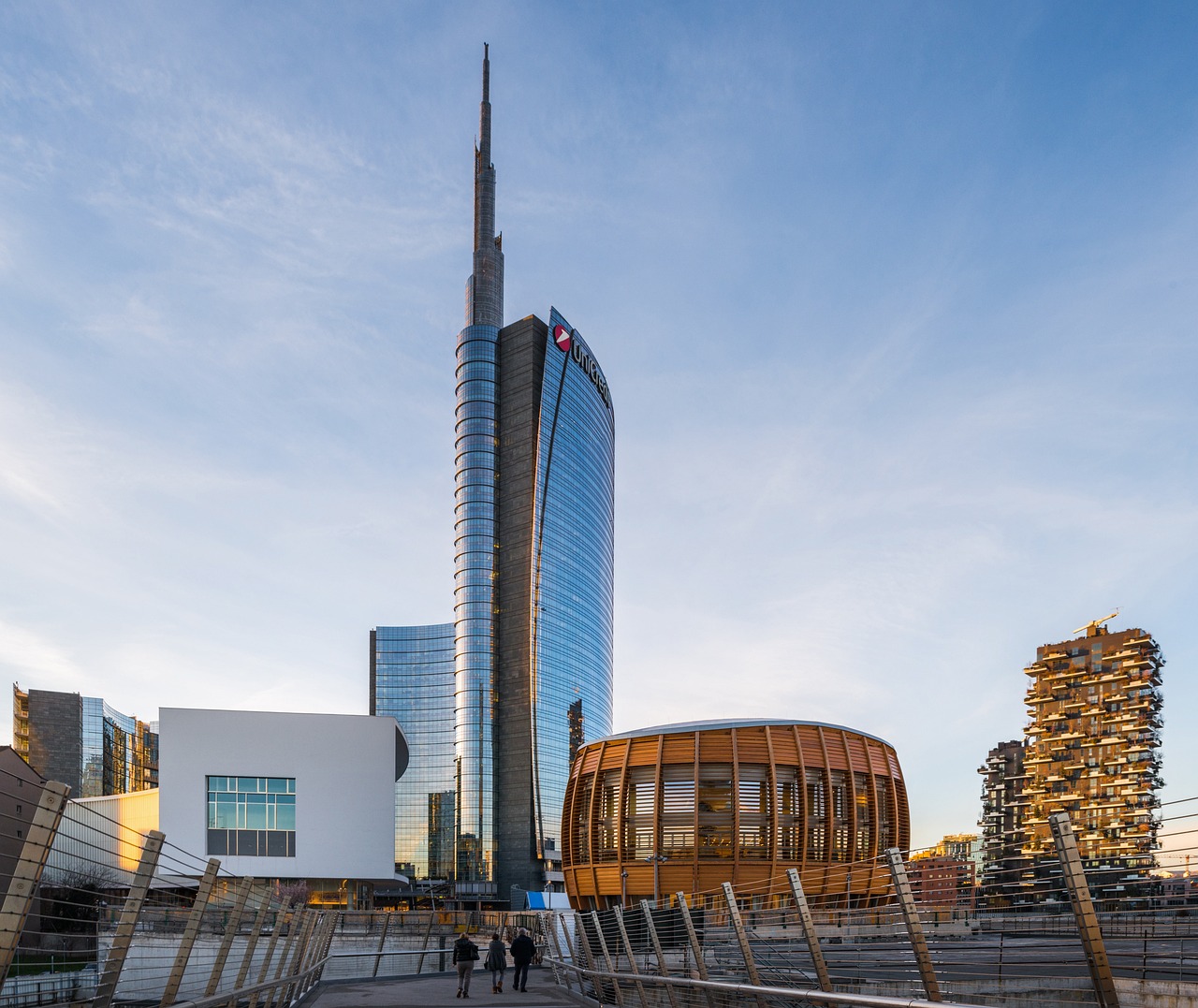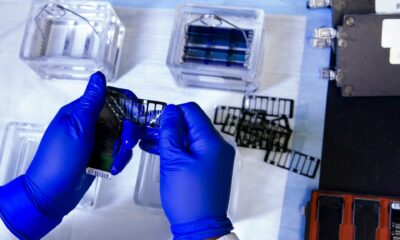Biotech
Why the Italian Biotech Sector Is Seen as a Strategic Engine of Growth
Looking at application sectors, although the activity of biotech companies in Italy remains largely concentrated in human health (just under 50 percent), between 2014 and 2021 there is an expansion in the shares relating to companies developing biotech applications for both industry and the environment and agriculture and animal husbandry.

The Italian biotech sector has more than 800 companies, 13,700 employees, and more than 13 billion in estimated turnover in 2022. This is the picture taken by the economic update of the ENEA-Assobiotec report “Biotechnology companies in Italy,” now in its eighth edition.
What is emerging from the report is a market that records growth on several variables, testifying to a resilient, dynamic, and strategic sector for the country’s development. “Biotech Italy still has small numbers when compared to other countries with which we are also competing, but an extraordinary potential if we consider that a recent EY study tells us that globally biotech will triple its value between 2020 and 2028,” commented Fabrizio Greco, president of Assobiotec-Federchimica.
“Finally in Italy, there are now several elements that can make the sector grow and run. The PNRR, in addition to making available large economic resources, asks the country to review and reform the rules of operation of the entire ecosystem of reference. New public and private capital today believes more in our realities. But, above all, the launch of a National Plan for Biotechnology, recently announced by Minister Urso,” Greco stressed.
“These are all very important building blocks that can help us compete in the international arena. It is then now necessary to make them operational as soon as possible to catch up with other developed countries and compete globally.”
If you want to read more about the Italian biotech sector and find the most important financial news of the day, download for free our companion app Born2Invest.
The number of biotech companies in Italy
In numerical terms, the number of active companies in Italy contracted slightly in 2020 (787 companies compared to 796 in the previous year), a figure mainly attributable to the decrease in the number of SMEs, which suffered most from the immediate impact of the pandemic, especially in the class below 10 employees. The numerical figure returned to growth in 2021, and growth is expected for 2022 for all size classes, totaling 823 companies. The number of new innovative startups also seems to have resumed the growth path that was momentarily interrupted due to the 2020 pandemic crisis.
When analyzed by size class, the majority share of domestic biotech companies is represented by micro enterprises (1-9 employees), followed by small ones (10-49 employees), reaching just over 82 percent of the total, while large entities (+ 250 employees) account for just under 8 percent of the entire population under analysis.
Looking at application sectors, although the activity of biotech companies remains largely concentrated in the area of human health (just under 50 percent), between 2014 and 2021 there is an expansion in the shares relating to companies developing biotech applications for both industry and the environment and agriculture and animal husbandry. These are the same categories of companies that have been showing a driving role in the bio-economy since 2014.
Also continuing without discontinuity is the nationwide spread of companies active in the biotech sector, although the territorial concentration of key economic indicators is still strong.
Biotech sector’s turnover
According to the new report, the industry experienced strong growth in turnover in 2021 and expects a consolidation of the figure for 2022. On this variable, the weight of biotechnology for health remains a priority with 74 percent of the total, but in the last two years, it is mainly applications for the bio-economy(industry and agriculture) that have resumed expansion with growth rates above 30 percent for both areas of application, reaching more than a quarter of Italian biotech turnover, with a share for 2021 of more than 25 percent of the total and in further growth trend in 2022.
The growing weight in the total acquired by Italian-controlled biotech R&D specialist firms is confirmed. In percentage terms, their share of turnover in the national total has more than doubled in the last decade and even tripled in the same period in the total turnover of companies specializing in biotech R&D. With respect to size classes, it is worth noting that more than 94 percent of biotech turnover is concentrated in medium to large enterprises.
“The new data return us to a sector that has proven more resilient than previous estimates showed, even registering a slight growth in turnover from biotech activities of +1.2 percent for 2020. Having passed the peak of the pandemic and its effects on the economic system, the biotechnology sector experienced a strong recovery in turnover growth in 2021. Therefore, a consolidation of the parameter is expected for 2022,” comments Gaetano Coletta, Head of the ENEA Service Offering and Enhancement of Innovation Services.
“If in 2020 the sector was sustained by applications for human health, the following two years will see a strong recovery in activities for industry and agri-zootechnology,” Coletta continued. “More than a quarter of turnover comes from applications in these areas, and their development is driving the territorial spread of the biotechnology industry, which has been affecting the regions of the Northeast and the South with Puglia and Campania leading the way for some years now.”
R&D investments in the Italian biotech sector
Intra-muros biotech R&D investments-that is, those carried out by companies with their own personnel and equipment-decreased with a one-year lag, relative to the number of companies, contracting by just under 5 percent in 2021.
However, projections seem to indicate a definite resumption of the growth trend in 2022, bringing the volume of intra-muros R&D investments back to the previous level.
Overall, these investments remain decidedly concentrated in the area of human health for more than 85 percent, but the dynamics of investments in the other application areas, especially for agriculture and animal husbandry, show significant growth. It should be noted that 80 percent of intra-muros R&D spending is concentrated in medium to large enterprises.
Geographical distribution
At the territorial level, as Gaetano Coletta pointed out, the diffusion processes affecting the South and islands (especially in terms of share of the number of companies, about 21 percent) and the Northeast of the country (about 6 percent of turnover and 12 percent of R&D investment) are confirmed. However, polarization remains very strong, especially in terms of economic variables: the top 4 regions (Lombardy, Latium, Tuscany, and Piedmont) account for more than 90 percent of turnover, 80 percent of intra-muros R&D investment, and 80 percent of employment, while the number of firms stands at 52 percent.
The leading region remains Lombardy, followed by Latium and Tuscany, which are highly specialized in health applications, while it is the northern regions in general that show marked specialization in biotechnology applications to industrial processes. In the south, which accounts for about 20 percent in terms of number of companies, Campania (just under 8 percent) and Puglia (just over 4 percent) stand out.
__
(Featured image by fototommy via Pixabay)
DISCLAIMER: This article was written by a third party contributor and does not reflect the opinion of Born2Invest, its management, staff or its associates. Please review our disclaimer for more information.
This article may include forward-looking statements. These forward-looking statements generally are identified by the words “believe,” “project,” “estimate,” “become,” “plan,” “will,” and similar expressions. These forward-looking statements involve known and unknown risks as well as uncertainties, including those discussed in the following cautionary statements and elsewhere in this article and on this site. Although the Company may believe that its expectations are based on reasonable assumptions, the actual results that the Company may achieve may differ materially from any forward-looking statements, which reflect the opinions of the management of the Company only as of the date hereof. Additionally, please make sure to read these important disclosures.
First published in StartupItalia, a third-party contributor translated and adapted the article from the original. In case of discrepancy, the original will prevail.
Although we made reasonable efforts to provide accurate translations, some parts may be incorrect. Born2Invest assumes no responsibility for errors, omissions or ambiguities in the translations provided on this website. Any person or entity relying on translated content does so at their own risk. Born2Invest is not responsible for losses caused by such reliance on the accuracy or reliability of translated information. If you wish to report an error or inaccuracy in the translation, we encourage you to contact us.

-

 Impact Investing1 week ago
Impact Investing1 week agoEU Drops 2029 Gas Boilers Ban but Ends Incentives from 2025 in Shift Toward Cleaner Heating
-

 Crowdfunding2 weeks ago
Crowdfunding2 weeks agoBanca Etica Launches Fundraiser for Women’s Economic Independence
-

 Impact Investing4 days ago
Impact Investing4 days agoEuropean Sustainability Week 2025: Advancing ESG Amid Uncertainty
-

 Crypto2 weeks ago
Crypto2 weeks agoTether Defends USDT After S&P Downgrade Amid Growing Calls for Transparency

























